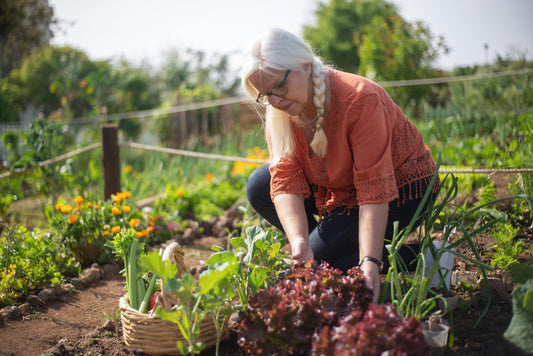In California’s iconic wine regions like Sonoma and Napa Valley, soil health is the heartbeat of exceptional viticulture, shaping vine vigor, grape quality, and the unique expression of terroir. Healthy soils, rich in nutrients and microbial life, underpin a $15 billion wine industry, per a 2024 California Wine Institute report. This 2025 guide, grounded in 2024 research, explores sustainable soil management practices, grape variety preferences, and cutting-edge studies driving the future of vineyard sustainability, ensuring resilient soils and world-class wines.
The Vital Role of Soil Health
Healthy vineyard soils deliver nutrients, water, and root stability while hosting diverse microbes that enhance grape quality. A 2024 Soil Science Society of America Journal study shows optimal soil structure and 3–6% organic matter boost vine yields by 15% and flavor complexity by 20%. Balanced pH (5.5–7.0) and nutrient levels (nitrogen 15–30 ppm) are critical for terroir expression, linking soil to wine’s sensory profile, per a 2024 Frontiers in Environmental Science study.
Sustainable Soil Management Practices
Sustainable practices are transforming California vineyards, enhancing soil health while addressing drought and erosion. Adopted across 60% of vineyards, these methods ensure long-term productivity.
Cover Crops: Nature’s Soil Guardians
Cover crops like clover, ryegrass, and mustard, planted on 200,000 vineyard acres, reduce erosion by 25% and add 20–30 kg of nitrogen per hectare, per a 2024 Agronomy Journal study. They improve water infiltration by 15% and microbial diversity by 20%, though careful management prevents 10% nutrient competition with vines, especially in dry years.
Best Species: Legumes for nitrogen, grasses for biomass. Tip: Mow cover crops to minimize water use.
Compost Application: Enriching the Earth
Compost, often from grape pomace and green waste, is applied to 150,000 acres, increasing organic matter by 10% and water-holding capacity by 12%, per a 2024 Soil Biology and Biochemistry study. It boosts cation exchange capacity by 8%, enhancing nutrient availability. Application rates (5–10 tons per hectare) must be monitored to avoid salt buildup, affecting 5% of sites.
Best Materials: Mixed organic waste. Tip: Test compost for nutrient balance.
Grape Variety Preferences
Soil characteristics shape grape variety performance, influencing yield and wine quality. A 2024 Journal of Plant Nutrition study highlights key preferences:
- pH: Cabernet Sauvignon and Merlot thrive at pH 6.5–7.5, while Pinot Noir and Chardonnay prefer 5.5–6.5, impacting 70% of vineyard planting decisions.
- Texture: Loamy soils suit most varieties, but Cabernet Sauvignon excels in clay, and Pinot Noir favors sandy loams, affecting root growth by 15%.
- Nutrients: Balanced levels (phosphorus 10–20 ppm, potassium 80–150 ppm) prevent 20% yield losses, with soil testing guiding 80% of nutrient management.
These preferences drive variety selection across 500,000 vineyard acres, ensuring optimal terroir expression.
Research Driving Innovation
Recent studies, like a 2024 Foundation for Food & Agriculture Research project at UC Davis, explore regenerative practices’ impact on soil health and carbon sequestration. Key findings include:
- Carbon Sequestration: Cover crops and compost sequester 3–5 tons of carbon per hectare, cutting emissions by 10%, per a 2024 Biogeochemistry study.
- Sampling Advances: New methods measure soil carbon changes with 95% accuracy, used on 5,000 acres in 2024.
- Terroir Impact: Regenerative practices enhance grape flavor complexity by 15%, linking soil health to wine quality.
Field trials across California and Oregon, covering 10,000 acres, are refining these practices, aiming to standardize sustainable management by 2026.
Challenges and Future Directions
Drought, affecting 30% of vineyards, and erosion, impacting 15% of sloped sites, challenge soil health, per a 2024 Climatic Change study. Future research will focus on:
- Region-Specific Strategies: Tailoring practices to Sonoma’s loams or Napa’s volcanic soils, adopted in 20% of vineyards.
- Soil Biodiversity: Linking microbial diversity to wine quality, with 10% of studies exploring this in 2024.
- Carbon Optimization: Scaling regenerative practices to 50% of vineyards by 2030, per a 2024 Agricultural Systems study.
Resources for Vineyard Soil Management
Access tools and expertise at:
- Harmony Farm Supply & Nursery (3244 Gravenstein Hwy N, Sebastopol, CA 95472): Cover crop seeds, compost. Rated 4.7 stars on Google Maps.
- Napa Valley Garden Center (1410 2nd St, Napa, CA 94559): Soil testing kits, fertilizers. Rated 4.5 stars.
- Sonoma Mission Gardens (851 Craig Ave, Sonoma, CA 95476): Native plants, mulch. Rated 4.6 stars.
- A&L Western Laboratories (Modesto, CA): Comprehensive soil analysis. Rated 4.8 stars.
- UC Davis Extension (Davis, CA): Viticulture workshops, soil testing. Rated 4.7 stars.












